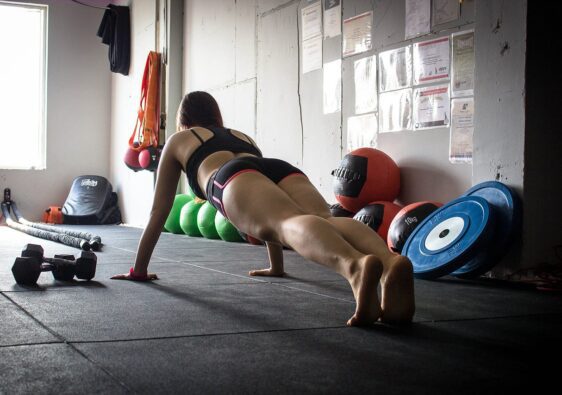Compression clothing can be a great way to help your body heal quickly after exercise. It can also improve proprioception and joint health while reducing muscle cramps and recovery time.
Improve Blood Flow
Many athletes wear compression garments during competition or recovery. They claim it helps increase circulation, improves performance, and reduces muscle soreness.
Compression garments, also called graduated compression clothing, are athletic gear designed to be worn over a prolonged period. These garments typically have graduated sleeves and apply gentle pressure to the body, mainly the legs.
Studies have measured the effect of these garments on hemodynamics during different types of exercise. For example, researchers evaluated the impact of cycling compression garments on cycling performance. In addition to increasing blood oxygen concentration, the garments improved StO2 output.
Similarly, a study examined the effect of lower-body compression garments on orthostatic intolerance after exercise. This study showed that the wearers of the garments had a lower incidence of orthostatic intolerance.
While the ergogenic effect of compression garments has been reported, the mechanisms are still unclear. One possible explanation could be that the pressure applied to the wearer’s leg by the garment might improve the venous return to the heart.
Compression stockings are one type of garment that can help you manage pain following surgery. They can also be used to reduce swelling after thrombosis or liposuction surgery. However, you must consult a physician about your proper length and pressure level.
Support Joints
A compression shirt or sock is an excellent way to improve your performance and reduce pain and inflammation in your legs and arms. Compression clothing can relieve arthritis, rheumatoid arthritis, and other conditions that affect your joints.
While many assume that wearing compression wear is only for sports, it can be a valuable accessory for everyday use. For example, compression shirts are a great way to prevent ankle and shoulder injuries. The material wicks moisture to keep you dry and comfortable while improving blood flow to your muscles.
While the benefits of compression wear aren’t limited to sporting activities, it’s a good idea to check with your physician before buying a compression sock or shirt. Some medical conditions like lymphedema may benefit from a high compression fabric in the right place at the right time. Using fitting compression garments can also help with symptoms of psoriatic arthritis, fibromyalgia, and other musculoskeletal problems.
The best compression sock or sock is a tight fit that is snug but not too close. If you have swollen or inflamed joints, purchasing a complete set of these garments is a good idea.
Reduce Cramping
Compression clothing can help relieve leg cramps. It also boosts your athletic performance. This is especially true if you’re looking to improve your vertical leap.
Compression clothing works by applying pressure to the muscle. This prevents blood pooling and prevents leg cramps.
Compression apparel also reduces inflammation, swelling, and pain. This is because it keeps your muscles warm, thus reducing the risk of muscle strain. The cold-weather months can be a particularly rough time for your muscles.
Compression gear is a great way to reduce muscle injury and speed up your recovery. It also reduces strain, improves circulation, and minimizes soft tissue damage.
Some experts say that compression gear’s benefits have been demonstrated anecdotally. However, studies on compression gear have had a few limitations. These include the fact that the benefits still need to be fully understood. Furthermore, it’s hard to know which studies to trust.
One study showed that wearing compression garments after a workout can help reduce soreness, fatigue, and muscle damage. Another found that compression garments can improve performance by as much as 40%.
Improve Recovery Time
If you’re an athlete, you’ve probably heard about the benefits of wearing compression clothing to enhance your recovery. Compression gear is designed to improve blood circulation and reduce swelling. It also decreases lactic acid buildup. This results in improved muscle function and strength.
In addition to improving your overall recovery time, compression gear can help you feel more comfortable while you’re working out. The best compression gear for you will depend on your sport. There are many choices available to choose from. You’ll need to know how and when to wear it to maximize your performance.
The most important thing to remember is understanding the proper timing for your workout. You can improve your recovery time by wearing compression gear, but it could hurt your performance if you do not wear it correctly.
Wearing compression clothing before and after exercise can increase blood flow to your muscles and reduce the amount of swelling. This helps your body to repair and recover faster. Some studies show that wearing compression garments can increase muscle performance, but others have found no positive effects.
Improve Proprioception
The ability to sense the position of your body and understand how it moves in space is called proprioception. The brain uses the position sensor to determine where to contract the muscles it controls. If you aren’t aware of your body’s position, you may overextend yourself and suffer an injury.
Some studies have shown that compression garments can help improve your proprioception and enhance your postural awareness. Compression garments increase cutaneous afferent inputs to your skin, which can help your brain acclimate to the changes in your environment. They also help maintain stable muscle alignment. This may also lead to improved performance in sports, such as soccer or football.
A recent study found that the benefits of wearing compression clothing for post-exercise recovery could be significant. Compared to control groups, wearers reported a higher perceived level of fatigue, accompanied by a more positive impact on the body’s ability to recover from the previous activity. It is still determined why this particular study exhibited a strong relationship between compression garments and recovery.



